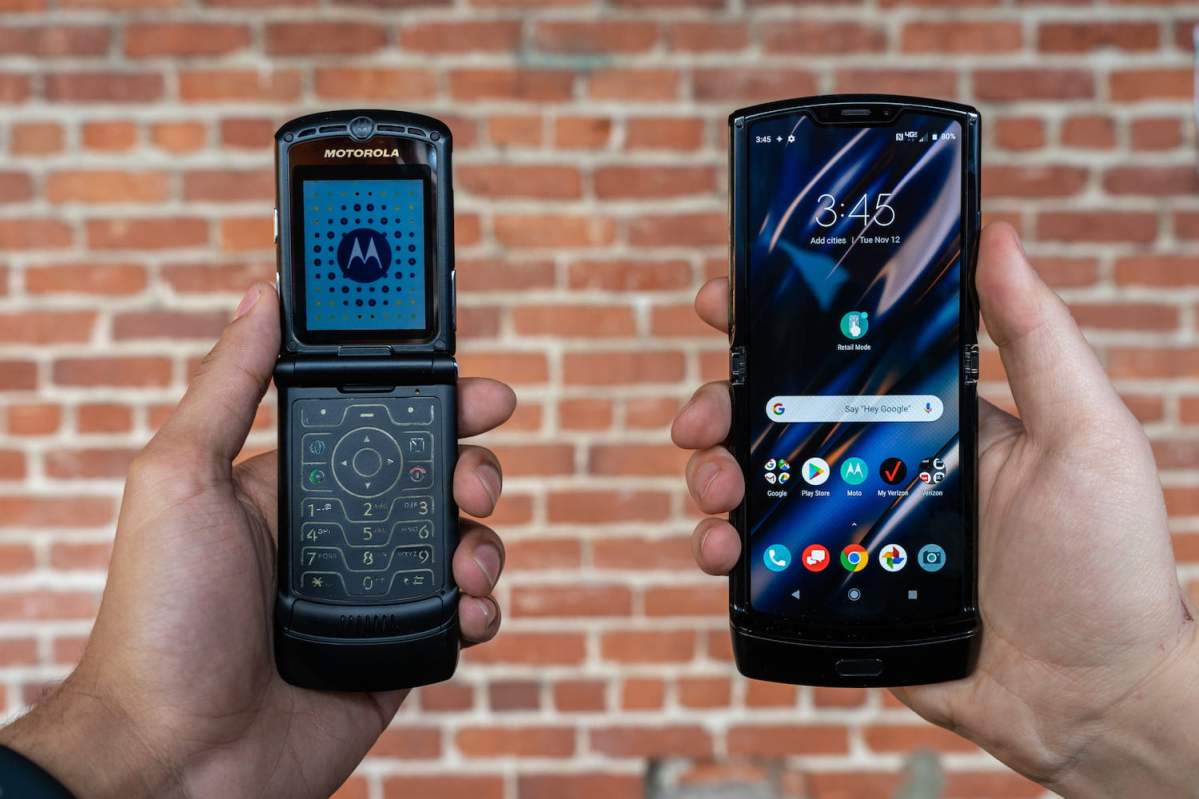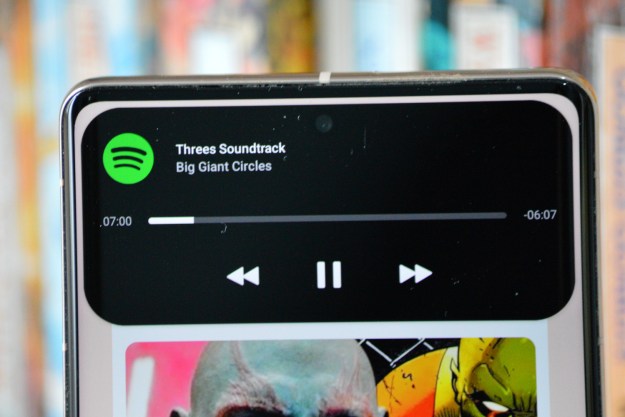With the curtain falling on 2019 it’s time to dissect the year that was and pick some winners and losers of 2019. Counting up the glorious wins, only one phone maker can take the title, but there are plenty of runners up this year. Some manufacturers just nailed it, while others had more mixed fortunes; some stumbled and faltered into a year to forget. Weighing up the releases, the sales, the strategic moves — this is how the top smartphone manufacturers ended up in 2019.
Winner in 2019: Samsung

Amid an industry decline in smartphone sales Samsung managed to increase its lead as the number one smartphone manufacturer in the world in 2019. The flagship S10 range kicked off the year, and Samsung set out its stall with four variants — the Galaxy S10, S10 Plus, the more affordable S10e, and Samsung’s first 5G phone, the S10 5G. This was a good indication of the strategy Samsung would take for 2019, aiming to hit every possible consumer segment with a phone that would tempt most of them.
Alongside its first 5G phone Samsung generated some serious buzz as the first major manufacturer to release a folding phone in the shape of the Galaxy Fold. Despite early issues with review units, which led to major screen defects and a delayed launch, interest in this new form factor remained high. There’s a theme here that’s strongly reminiscent of the original Galaxy Note release, a phone which was ridiculed on release, but went on to herald a whole new category and became one of the most popular series in Samsung’s line-up.
For all the excitement about Samsung’s flagship phones, the revamped A series of midrange and budget phones, such as the impressive Galaxy A50, did much to boost the manufacturer’s fortunes this year. In a frugal move, Samsung axed the lower-end J series, and consolidated its affordable smartphone ranges into a single A series that starts with the A10 and goes all the way up to the A90, which may be the first midrange device to support 5G. This clever reshuffle helped it compete with budget brands like Honor, which is owned by Huawei.
So far, so good, but what really sealed the victory for Samsung in 2019 was the astonishing Galaxy Note 10 Plus. Perfectly balancing Samsung’s “kitchen sink” approach, with everything you could possibly want in a phone, the Note 10 Plus also boasted a flashy, yet elegant design, instantly becoming our favorite Android phone of the year — an honor it would never lose. There was even a smaller, regular Note 10 for the first time, and a Note 10 Plus 5G for early adopters of fifth generation networks. The crowning glory was the Galaxy Watch Active, quickly followed by the slightly improved Galaxy Watch Active 2, which is our top smartwatch pick for Android phone owners. Samsung decisively claimed the top spot in 2019.
Runners up: Apple, Motorola, OnePlus, Oppo, Xiaomi, Vivo, Asus

It was a fairly slow start to the year for Apple as iPhone sales dipped and smartphone market share slipped. Overdue refreshes for the iPad Air and iPad Mini, followed by a new basic iPad with a bigger screen, reemphasized Apple’s tablet dominance. As the new iPhone reveal crept closer there was a sense that Apple had to take things up a notch and the iPhone 11 range did exactly that with a renewed focus on photography that signaled a return to form.
The iPhone 11 Pro is the best all-around smartphone you can buy right now, offering unmatched speed and impressive stamina with the most advanced silicon in any phone currently, and a beefed up battery to support it. All this is alongside an excellent triple-lens camera which finally boasts an impressive night mode. The Max offered a larger screen (and battery) and the iPhone 11 served as a more affordable alternative. Apple also maintained its top spot in the smartwatch market with the new Apple Watch Series 5 — newly minted with an always-on display, which doesn’t appear to impact battery life.
Motorola
After being displaced from top honors by an impressive range of budget Nokia phones from HMD Global last year, Motorola came back strong in 2019. Not only did it offer many of the best cheap phones, with the Moto G7 and Moto G7 Power as particular highlights, it also released the 5G Moto Mod, bringing 5G connectivity to the Moto Z3 and the Moto Z4. The Lenovo-owned brand also excited us with an alternative vision of the future of folding phones by announcing the new Motorola Razr with a clamshell design that simultaneously struck a nostalgic and futuristic chord.

OnePlus
Last year’s winner, OnePlus, has done much to reinforce its dominance this year. Although it impressed everyone with the excellent OnePlus 7 Pro, the relatively high price raised some eyebrows and questions about whether the company would abandon the affordable flagship strategy that has catapulted it to success. The OnePlus 7T answered these to an extent, offering great value at $600; it’s a phone that’s short on competition. The manufacturer also deepened its carrier relationships and dipped a toe in 5G waters with the OnePlus 7 Pro 5G which is available from Sprint and the OnePlus 7T Pro McLaren on T-Mobile.
Oppo, Xiaomi, Vivo
Though they don’t do a great deal of business in the U.S., Chinese manufacturers Oppo, Xiaomi, and Vivo have been selling a lot of phones in other parts of the globe. This year, all three have displayed some innovations we’re likely to see more of in the future, particularly Oppo, which has developed new fast charging technology capable of taking the 4,000mAh battery in the Reno Ace from zero to 100% in a blisteringly-quick 30 minutes, powerful camera zoom in the Reno 10x Zoom, and under-screen camera technology which is still a prototype for now.

Asus
Asus continued its push back into the smartphone market this year. You’ll struggle to find a better phone than the Asus Zenfone 6 for $500 and it has a flip-up camera design that dares to be different. The Taiwanese manufacturer also delighted gamers with the powerful and extensible Asus ROG Phone 2.
A mixed year for Huawei, Honor, Google, Nokia (HMD Global), TCL

It’s been a year of tough challenges for Huawei as the Chinese manufacturer fell victim to a trade war between the U.S. and China, which saw it lose access to Google’s Play Store and suite of apps and put a big question mark over its continued use of Android. At the same time, Huawei hit a new sales record, claimed the number two spot in sales, launched the folding Mate X in China, and released the impressive P30 Pro and Mate 30 Pro featuring cutting-edge hardware. Honor is Huawei’s more youthful sub-brand which tends to offer high-value, cheaper smartphones, but it has been hit by the same ban as its parent company.
Google surprised us in 2019 with cheaper versions of its flagship phones in the Pixel 3a and 3a XL. With the same excellent camera as the Pixel 3 and Google’s smart software features — not to mention better battery life and a headphone port — the Pixel 3a proved to be a compelling prospect at $400. But then Google shot itself in the foot with the anxiety-inducing limited battery life of the Pixel 4. The camera is another triumph, with a new, secondary, telephoto lens and the ability to capture very long exposures for dazzling shots of the galaxy through astrophotography. The screen is also top notch, and it’s a unique-looking phone, but a lack of stamina hobbles the experience greatly.

HMD and TCL
While HMD Global had a great 2018 churning out Nokia-branded phones and TCL did the same with BlackBerry, they’ve both had a quieter 2019. Phones like the Nokia 7.2 failed to hit the mark in the face of competition from Motorola and Google. TCL has kept things ticking for BlackBerry in the mid-range market, but plans to launch TCL-branded smartphones are advancing and begin with the midrange TCL Plex. The company has also been focusing on innovation in screen technology, a strength it can draw on from its TV division, and it teased a zigzag concertina-style folding smartphone concept that suggests an alternative direction for this emerging category.
Loser in 2019: HTC

It’s sad to see HTC decline further after a bad 2018 which saw major job losses and the sale of the majority of its smartphone design team to Google, but the innovative Taiwanese firm is ending 2019 with the faintest of holds on the smartphone market. It released the very niche HTC Exodus 1 and the cheaper 1s, prompting us to to ask what’s the point of a blockchain phone? There was also the slightly odd HTC 5G Hub — an Android device that acts as a 5G hotspot. Two midrange releases, the HTC U19e and Desire 19+, came out in Taiwan in the summer, but haven’t been sold elsewhere. It looks as though the sun might set on HTC’s smartphone business for good.
Runners up: Sony, LG

It’s no secret that Sony’s smartphone business has been in decline over the last few years, but it hit new lows in 2019. The Japanese manufacturer has remained defiant, insisting it won’t throw in the towel on smartphones, but the Xperia 10 failed to compete with better-value midrange phones and the Xperia 1 was just too expensive for what it offered. When sales dropped to just 900,000 smartphones for the period of April to June, it was the first quarter that Sony had sold fewer than 1 million phones since it began selling phones, prompting us to ask if Sony’s smartphone business was dead. Sales dropped further to just 600,000 in the following quarter, but there may be a glimmer of hope with the appointment of Sony’s camera guru to the mobile division and a fresh strategy.
LG’s mobile division has been operating on a loss for years now and sales of its smartphones have been dismal in 2019. The LG G8 ThinQ was capable, but too expensive on initial release and it failed to impress. The LG V50 ThinQ brought the promise of 5G, but the new network connectivity had essentially been packed into last year’s phone. LG has clearly been feeling the pinch and it has moved smartphone production from its home country of South Korea to Vietnam in an effort to cut costs. LG’s other divisions are doing well, but it remains to be seen how long LG will be willing to use those profits to prop up a loss-making phone business.
Editors' Recommendations
- The OnePlus 12 has one big advantage over Samsung and Apple
- Look who just replaced Samsung as king of the global smartphone market
- I used Samsung’s next big smartphone update. Here’s why I love it
- I’ve used an iPhone for 14 years. The Pixel Fold made me want to stop
- I did a Pixel 7a camera test — and it’s bad news for Samsung



